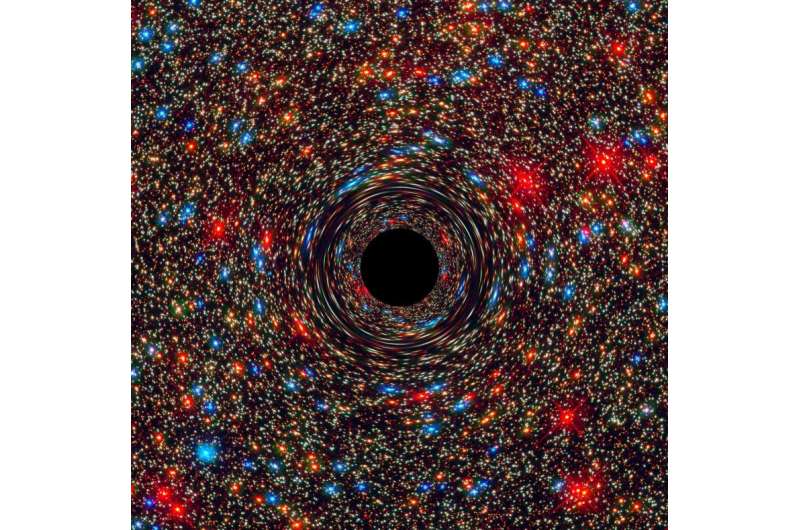This computer-simulated image shows the supermassive black hole at the core of a galaxy. The black area in the center represents the black hole’s event horizon, where no light can escape the massive object’s gravitational pull. A black hole’s powerful gravity distorts the space around it like a playground mirror. As stars pass by a black hole, the light from background stars is stretched and blurred. Image credit: NASA, ESA, D. Coe, J. Anderson and R. van der Marel (STScI)
As strange as it sounds, black holes appear to be holograms.
In the 1980s, physicist Jacob Bekenstein was able to accurately calculate the extent of a black hole’s growth. If you add a bit of information to a black hole, its surface area increases by one Planck unit.
The Planck length is the smallest measurable distance and is approximately 10-35 Meters, this is important because it’s at that scale where our understanding of physics completely breaks down. Specifically, we think that at this scale we need quantum gravity theory to understand what’s going on. The Planck area is the square of this length, and the black hole grows according to this length. It could actually be any other number in the universe, but it’s this particular number.
When we add information to a black hole, it reacts in a unique quantum gravity manner unlike any other system in the universe.
The information entering a black hole appears to be more related to its surface than its volume. its two-dimensional surface. Whatever information we pour into the event horizon seems to stay there, reacting directly to that information. It seems that we are encoding all the three-dimensional information about building up on a two-dimensional surface and falling into a black hole.
Black holes appear to be holograms.
What is the relationship between black holes and holograms? Why does the only accessible place in the universe where quantum mechanics and gravity meet, the black hole’s event horizon, behave in a counterintuitive way when its surface responds to information more than its volume does? Nature is trying to teach us something, but we can only discern the lesson in a faint whisper.
So, let’s hold nature’s hand and see where this trail leads. If black holes are holograms, and black holes are manifestations of quantum gravity, then perhaps we begin to see through blurry and moving glass like Galileo did when he first trained his naive optics on the sky. To the extent that a theory of quantum gravity must be holographic in nature, holography has huge implications not only for how we view mysterious mathematical physics, but also for the scope of reality itself.
This is the line of reasoning behind the hologram principle, a statement of no more than three words that completely destroys our understanding of space, time, matter and energy: We live in holograms.
The next time, and perhaps the last time, the gravitational revolution is coming. It began by observing that black holes are the most entropic regions in the universe, and that their consumption of information content causes their surface area rather than volume to grow proportionally. It ends with a new understanding of gravity.
Provided by Universe Today
citation: Holographic secrets of black holes (2023, December 19) Retrieved December 21, 2023, from https://phys.org/news/2023-12-holographic-secret-black-holes.html
This document is protected by copyright. No part may be reproduced without written permission except in the interests of fair dealing for private study or research purposes. Content is for reference only.
#holographic #secrets #black #holes
Image Source : phys.org
